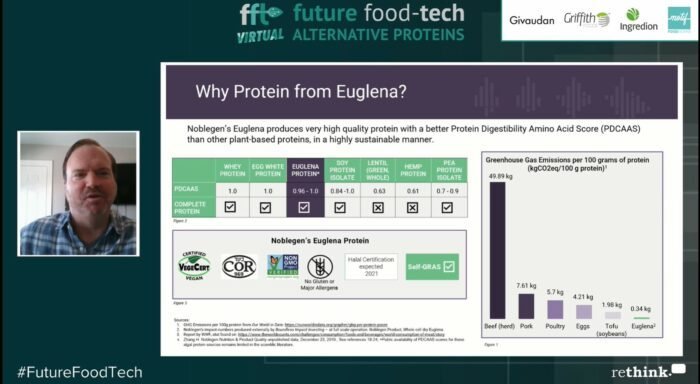In collaboration with CNTA, we have put together a summary of the most relevant arguments made at the event Future Food Tech Alternative Proteins. Some of these are the potential of technologies such as precision fermentation or synthetic biology as ways to obtain protein alternatives, as well as predicting that this trend is likely to continue to grow.
CNTA, National Centre for Food Safety and Technology, is a private non-profit making association. Since 1981, the aim of this research centre has been to contribute towards improving the competitiveness and quality of the food sector. Its work is focused on the fields of food science and technology, biology, chemistry, agronomic engineering, food sciences and nutrition.
What is contributing to this acceleration in the so-called alternative protein revolution? Why, as experts and international foodtech leaders point out, are the “stars aligning”? Here we summarize some of the keys:
Technology boom helps: many breakthroughs in precision fermentation and synthetic biology
If there was one term redundantly mentioned at Future Food Tech Alternative Proteins it was “precision fermentation”. Undoubtedly, it is one of the trendy technologies to meet the challenge of the search for alternative proteins. During the event, it was predicted that its progressive implementation will make it possible to continue producing ingredients with technological and nutritional characteristics capable of matching and even surpassing animal sources.
It is also a sustainable and efficient technology, which are very valuable qualities considering that the food industry faces the challenge of mitigating its climate impact in the coming years. Thus, the progress that can be made in the application of precision fermentation will open up great opportunities in the food industry.
The food industry is also looking very closely at the potential offered by synthetic biology. Numerous startups are succeeding in creating very promising cell-based products. So far, cell-based alternatives are the ones that are best able to replicate whole cuts (steaks, chops, sashimi…), as they are able to offer the consumer organoleptic and nutritional qualities that practically match those of the “originals”. After all, as Michael Selden, CEO of Finless Foods, pointed out, “laboratory developments are managing to reproduce what really happens in nature”. Looking to the future, regulatory and price barriers remain to be overcome so that these products can have a real and extensive market penetration.
The strength of new sources: algae, fungi, SCP…
Little by little we will be seeing more products based on alternative proteins from a wide variety of sources. At Future Food Tech Alternative Proteins we were able to see examples of how, increasingly, sources are diversifying with interesting results and potential market implementation. From the commitment to algae varieties such as the red algae used by Triton Algae or the chorella used by Algenuity, to the commitment to mycelium by Meati Foods or the unicellular protein Euglena by Noblegen. These cases make it clear that there is life beyond plant-based sources.

Even so, work continues in the plant-based segment, where it is also possible to find sources other than the usual ones (chickpea, pea, soybean). To make this search more effective, the need for a better and more detailed knowledge of the nutritional properties of new plants or legumes was put on the table, applying technologies that make it possible to characterize the ingredients from a technological (texture, stability, etc.) and nutritional (amino acids, digestibility, etc.) point of view.
Greater knowledge will generate even more possibilities for diversification.
“There are startups that are scaling very fast”.
Sean O’Sulivan, of SOSV Imvestment, gave another of the keys that is contributing to the acceleration of developments and the expectation that new products can slowly make their way onto the agenda of more consumers. “There are startups today that are scaling very fast and that is a huge step towards success,” he said in the opening keynote at the congress. One of the reasons for that ability to scale is the fact that the most disruptive startups are counting on a solid technological base. This is also attracting the attention not only of investors but also of large companies in the sector. Looking to the future, everything suggests that this technological solvency will gradually increase and this will allow the innovation boom to be aligned with the investment boom, whose upward trend has been a constant in recent years.
The forecasts, therefore, continue to be very optimistic. With greater technological solvency, it will be possible to scale up and achieve products that can compete on price in the market, reaching a larger number of consumers. This is undoubtedly one of the keys to ensuring that the much-talked-about acceleration does not come to a screeching halt.
The food industry is facing a scenario in which it can connect with a consumer who is increasingly committed to sustainability and who sees alternative protein sources as a strategy in line with this commitment. If we add to this the fact that alternatives to animal protein are already an unavoidable part of the future agenda of institutions and administrations, the scenario is favorable for the “revolution” to consolidate its change of gear and reach cruising speed.
The original content was written by Mikel Arilla, CNTA’s Vanguard and Trends Technician, is available here.

